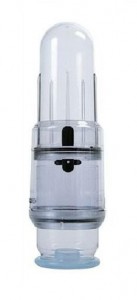

7 From 1917 to 1970 the device was barely altered, and it was Geddings Osbon who eventually designed and marketed the “youth equivalent device,” with the help of Nu-Potent Inc. Otto Lederer combined suction and compression to produce a surgical device for the treatment of ED.

7 However, it was not until 1917 that Dr. The first clinical application for vacuum technology in the treatment of ED was in 1874 by Dr. However, among these, the VED seems ideally placed to form the basis of penile rehabilitation. 6Īt present, no set regimen has been determined for penile rehabilitation, but combinations of oral and non-oral therapies have been investigated. 4 Regular oxygenated blood flow to the corpora is required for smooth muscle maintenance, which has been found to atrophy 4 to 8 months after RP. Although nerve recovery takes time, the fibrotic changes following RP can be prevented by increasing oxygenation of the corpora. The concept behind penile rehabilitation is the recovery of erectile function following RP by prevention and reversal of some of the aforementioned changes. 3 This reduction in arterial inflow to the penis causes hypoxia and subsequently increased production of transforming growth factor-β, apoptosis, and collagen deposition, culminating in corporeal fibrosis. 4, 5 It has been found that 59% of patients have arterial insufficiency after RP, with a further 26% having venous leakage, which is associated with arterial insufficiency. In addition, there appears to be reduced arterial supply to the corpora as a result of injury to the accessory pudendal arteries. Although nerve regeneration occurs postoperatively, these nerves are slow to recover and can take up to 3 years to return to baseline function, 4 which can result in either an absence or decrease in erectile function. 3 This neuropraxia has profound effects on erectile function. Nerve damage occurs due to stretching, cutting, or thermal injury during surgery. However, despite which procedure is performed, there is almost inevitably some degree of nerve damage postoperatively due to the proximity of the nerves to the prostate. RP can be performed as either a nerve-sparing or non-nerve-sparing operation. Postprostatectomy Changes and Penile Rehabilitation But what evidence is there for VED success after prostatectomy and what role do VEDs have in penile rehabilitation after ED? We present current evidence and provide our recommendations based on the latest literature. Despite highly reported satisfaction and efficacy with VEDs, there is a move by some medical practitioners away from VEDs due to cost. 2 There are a number of options available to manage ED after RP, including phosphodiesterase-5 (PDE-5) inhibitors, intracorporeal injections, intraurethral alprostadil, and vacuum erection devices (VEDs). With an early diagnosis of prostate cancer, there is an increase in the rate of RP in younger men and the importance of ED as a quality-of-life issue has subsequently increased. 2 With an increase in the detection of prostate cancer in younger men, there is a greater emphasis on the appropriate management of ED after RP. The incidence of ED following RP has been reported to be between 14% and 89%. 1 When patients undergo a radical prostatectomy (RP), there is a risk of postoperative erectile dysfunction (ED). Prostate cancer is the most common cancer in men over the age of 50 years.


 0 kommentar(er)
0 kommentar(er)
